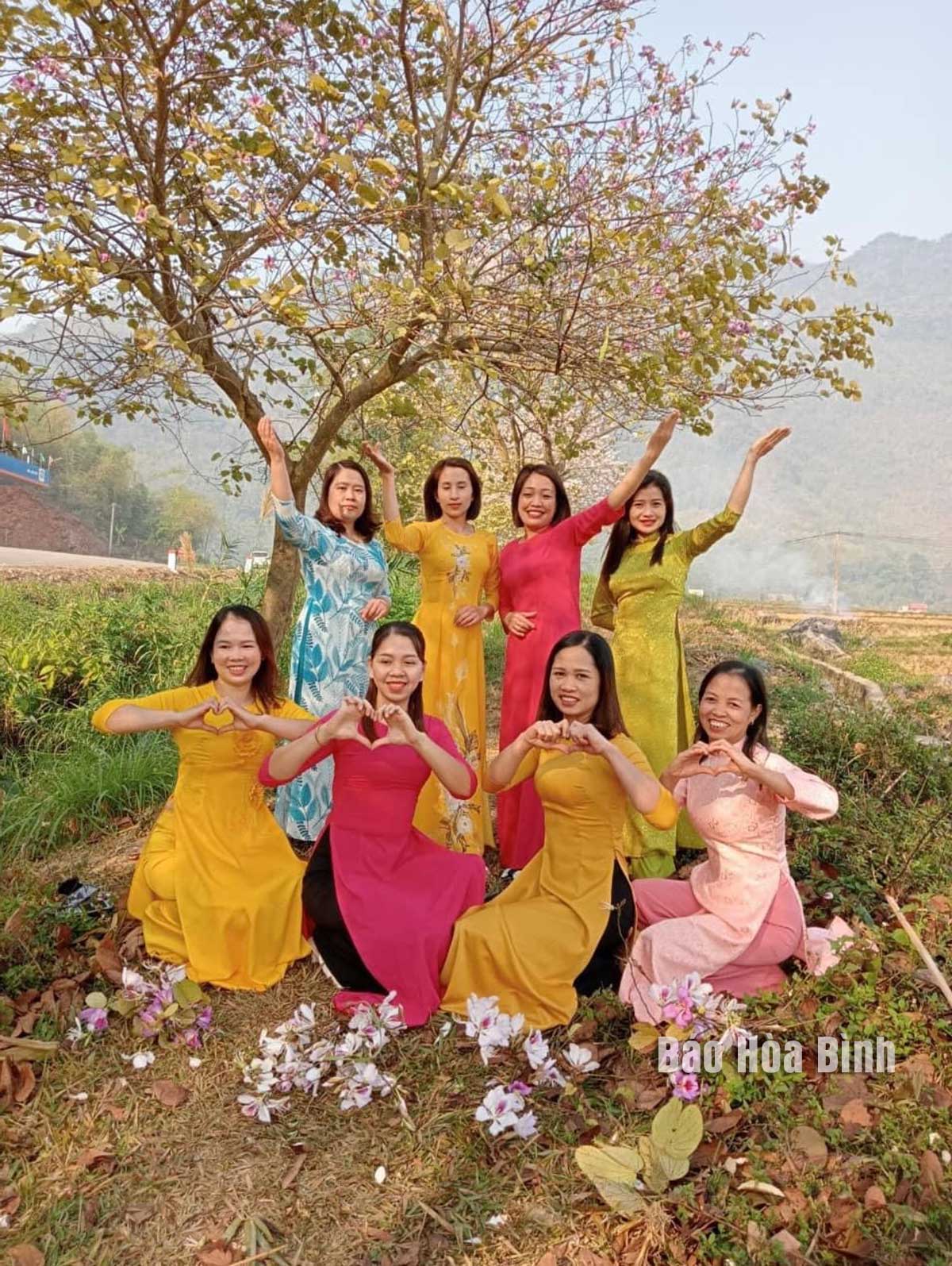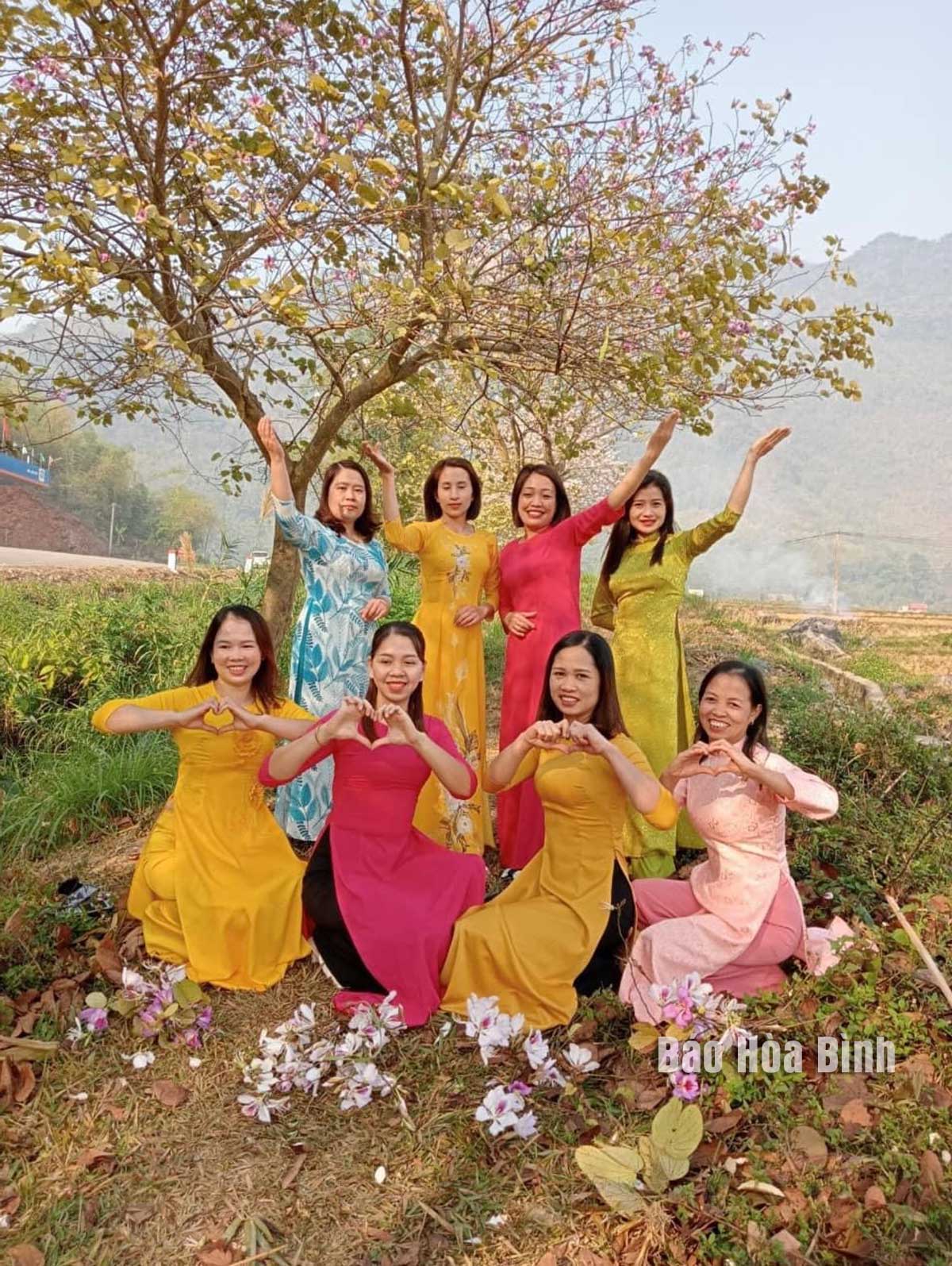
These days, tourist attractions in Mai Chau district, especially those highlighted by the charming and romantic white Ban (Bauhinia) flower blossoms, are attracting a large number of visitors from across the country. Visiting these sites, tourists can immerse themselves in the pristine and majestic beauty of nature.
Ban flower trees along roads in Mai Chau
district are starting to bloom, attracting many people to take photos.
March is the peak bloom time of Ban flowers. The
northwestern region is dyed white with a spectrum of flowers, resembling a
landscape painting. On mountain peaks, slopes, and rocky cliffs, everywhere is
a pristine white colour dotted with romantic purple spots. Looking closer,
full-bloom Ban flowers are like flying butterflies. Some flowers have a purple
petal among white ones, some have a light pink petal. The Ban leaves are shaped
like horseshoe, but many Thai girls like to think that they have the shape of
double hearts.
At close distances, you can see slender Ban
flowers resembling the hands of mountainous girls. When in full bloom, the
flower spreads wide like butterfly wings with beautiful pistils.
During March, nature enthusiasts often plan
journeys to the northwestern region to admire the beauty of the flower and at
the same time enjoy the fresh, invigorating atmosphere of the spring weather,
and to capture memorable moments.
The Ban flower is closely associated with the
cultural and spiritual life of ethnic communities in the Northwestern region,
especially the Thai ethnic group. It symbolises love and faithfulness through
the love story of a beautiful girl named Ban and a smart man named Khum. The
story has it that Ban and Khum were in love with each other. Unfortunately,
Ban’s parents did not accept their love because Khum was poor. Failing to
persuade her parents, the girl left her home on a Spring morning to look for
her lover. She went and went deep into the forest, and finally collapsed and
died. In the spot where she died, trees grew with thousands of flowers, the
petals of which look like the girl’s beautiful hands. Khum came to the place
but all he could find was Ban’s head scarf. He desperately called her name
until he died and became a bird named Loc Khum. Since then, when spring comes,
white Ban flowers blossom across the forest, while Loc Khum birds keep on
singing like the voice of the man calling his lover throughout the Ban flower
season.
There is another story about the flower, which
says the flowers have their origin in the white cloth that local people tied on
trees in mourning of local insurgents who died while fighting against evil and
oppressing forces.
The flower is also a symbol of pride in the
treasure trove of folklore literature of the ethnic minorities in the
Northwestern region, as it represents the purity and innocence of women. It is
also a symbol of happiness, love, and prosperity, as well as the filial piety
of children towards their parents and reverence for spiritual deities.
Located just a 20-minute drive from Hoa Binh City, Ora Hill Farmstay & Glamping Hoa Binh is a captivating new destination nestled in Mo hamlet, Bình Thanh commune, Cao Phong district. Combining farming with leisure, this tranquil retreat is perfect for those seeking balance, joy, and an immersive experience in the expansive beauty of nature.
Muong Bi - Tan Lac is renowned as one of the four famous Muong regions in Hoa Binh province. Blessed by nature with a favourable climate and stunning landscapes, Tan Lac holds great advantages for tourism development. The local tourism industry has made remarkable strides in recent times thanks to the attention and support from the local authorities and sectors.
With its strategic location, well-developed transport network, and diverse soil and climatic conditions, Hoa Binh is emerging as a must-visit destination in Vietnam's northwestern tourism corridor. The province boasts numerous attractions, including the Kim Boi hot springs (Kim Boi district), the Dau Rong cave complex (Cao Phong), the Mai Chau valley (Mai Chau), and the iconic Hoa Binh hydropower plant.
The northern mountainous province of Hoa Binh has been listed among the 71 most beautiful places to visit worldwide by the prestigious US travel magazine Condé Nast Traveller.
Hoa Binh province’s rich natural and cultural resources position it as a prime location for developing community-based tourism (CBT). In recent years, support from central and provincial policies, as well as assistance from non-governmental organisations, have encouraged local ethnic minority and mountainous communities to actively engage in the sector.



